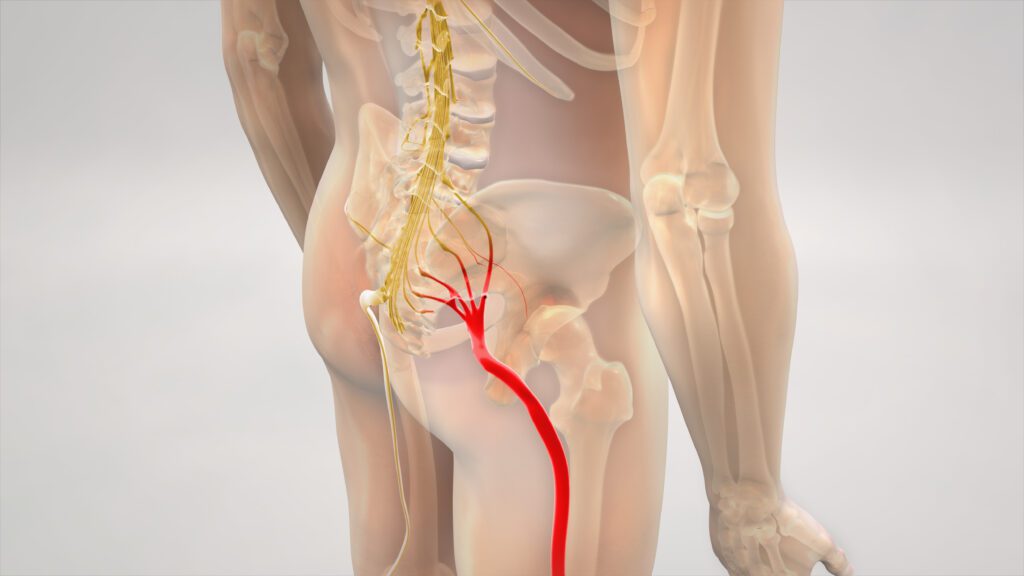What is Sciatica?
Sciatica is pain resulting from pressure or irritation on the sciatic nerve, the body’s largest nerve, which runs from the lower back through the buttocks and down each leg.
Sciatica isn’t a condition itself, but rather a term for symptoms caused by a problem with the sciatic nerve or the nerve roots that form it.

What are the Symptoms of Sciatica?
Pain: Often described as a sharp, shooting, or burning pain that radiates from the lower back into the buttock and down the leg, and sometimes into the foot.
Numbness or tingling: You might feel pins and needles sensations in the affected leg.
Weakness: Some individuals experience muscle weakness in the leg.
Worsening factors: Symptoms can worsen with activities like walking, coughing, or straining.
What Causes Sciatica?
Herniated disc: This is the most common cause, where the soft center of a spinal disc pushes through its outer layer and presses on a sciatic nerve root.
Bone spurs: Overgrowths of bone (osteophytes) can form in the spine and compress the nerve.
Other causes: Conditions like arthritis or piriformis syndrome (where the piriformis muscle irritates the sciatic nerve) can also lead to sciatica.
Do I need a scan for my sciatica?
Your clinician will take into account all the factors relevant to your specific case before deciding if you need a scan. If we think imaging is necessary in your case, The most common and effective imaging for diagnosing the cause of sciatica is an MRI
MRI (Magnetic Resonance Imaging)
What it is: An MRI uses strong magnets and radio waves to create cross-sectional images of your body.
Why it’s used: It’s excellent for visualizing soft tissues, such as spinal discs, nerves, and muscles. This allows our clinicians to see if a disc is herniated, if a nerve is being pinched, or if there are other soft tissue issues contributing to sciatica.
Best for: Identifying the exact source of the pain and making a precise diagnosis.
What treatment is there for my sciatica?
Thankfully there are many effective treatments for Sciatic conditions. Our practice, with both GPs and Allied health professionals, has access to the latest treatments currently available. These include:
Medication: Over-the-counter pain relievers like NSAIDs (ibuprofen) can reduce pain and inflammation. In some cases, doctors may prescribe muscle relaxants, medications for nerve pain, or even opioids for short periods.
Physical Therapy: Our clinicians can help with stretches and exercises to improve strength and flexibility – targeted rehabilitation programs are a great way to minimize the risk of future sciatica episodes. They may also use spinal joint techniques to relieve pressure on the nerve.
Flexion-Distraction (FD) Therapy: Recognised in current science as extremely safe and effective for sciatic nerve conditions, FD is a gentle rhythmic traction therapy designed to remove pressure off the sciatic nerve. Click HERE to see our Chiropractor Jack, explain the mechanism of FD therapy.
Activity Modification: Gentle, low-impact activities like walking or swimming are often recommended, while high-impact activities should be avoided.
Heat and Ice Therapy: Applying ice packs to reduce inflammation, followed by heat treatment to soothe muscles, can be beneficial.
Proper Posture: Maintaining good posture, especially when sitting, can help reduce mechanical pain. Our clinicians will assist you in posture modification.